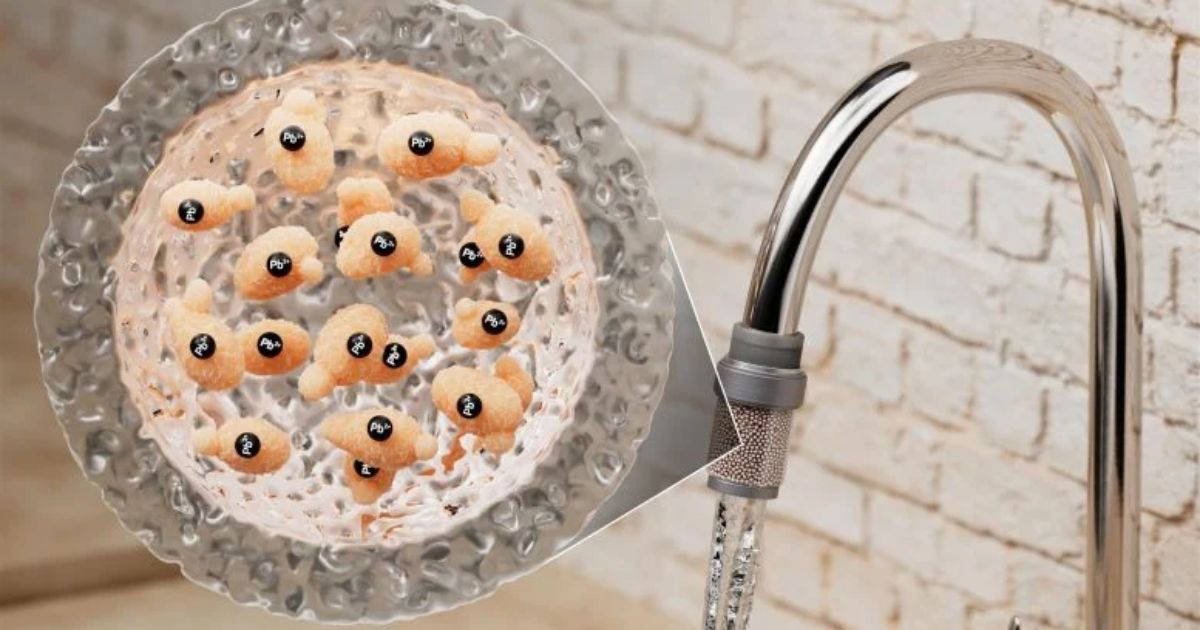
This article is included in these additional categories:
Beer breweries discard thousands of tons of surplus yeast each year. MIT and Georgia Tech researchers have discovered an innovative way to repurpose this waste: using yeast to absorb lead from contaminated water.
Biosorption: A Sustainable Solution
The researchers have harnessed biosorption, where yeast cells can quickly absorb trace amounts of lead and other heavy metals from water. They encapsulated the yeast inside hydrogel capsules to create an efficient water filter. The encapsulated yeast can be easily removed from the water after purification, making the process practical and sustainable.
“We have the hydrogel surrounding the free yeast that exists in the center, and this is porous enough to let water come in, interact with yeast as if they were freely moving in water, and then come out clean,” says Patricia Stathatou, a former postdoc at MIT and now a research scientist and incoming assistant professor at Georgia Tech. “The fact that the yeast themselves are bio-based, benign, and biodegradable is a significant advantage over traditional technologies.”
Research and Collaboration
The study, published in the journal RSC Sustainability, was led by MIT graduate students Devashish Gokhale and Stathatou. Patrick Doyle, MIT’s Robert T. Haslam Professor of Chemical Engineering, served as the senior author, with contributions from Christos Athanasiou, an assistant professor at Georgia Tech and former MIT visiting scholar.
The collaboration began in 2021 when Stathatou and Athanasiou, then working at MIT’s Center for Bits and Atoms, discovered that waste yeast from a single Boston brewery could potentially treat the city’s water supply. The challenge was efficiently removing the yeast from the water after it absorbed the lead. This problem was solved when they met Gokhale at the AIChE Annual Meeting, where he presented his work on hydrogels for capturing micropollutants. They combined their expertise, encapsulating the yeast in hydrogels developed by Gokhale and Doyle.
The Encapsulation Process
Gokhale explains, “What we decided to do was make these hollow capsules — something like a multivitamin pill, but instead of filling them up with vitamins, we fill them up with yeast cells. These capsules are porous, so the water can go into the capsules and the yeast are able to bind all of that lead, but the yeast themselves can’t escape into the water.”
About half a millimeter in diameter capsules are made from polyethylene glycol (PEG), a polymer commonly used in medical applications. The process involves mixing freeze-dried yeast with polymer subunits in water and then exposing the mixture to UV light, which forms the capsules with yeast trapped inside.
Mechanical Robustness and Scalability
Led by Athanasiou, the team tested the mechanical stability of the hydrogel capsules, ensuring they could withstand forces similar to those in household faucets and larger water treatment plants. This aspect is crucial for scalability, providing the capsules and the yeast inside remain intact during water treatment processes.
The researchers constructed a proof-of-concept packed-bed biofilter capable of continuously treating trace lead-contaminated water for 12 days, meeting EPA guidelines. This method potentially consumes less energy than traditional processes like precipitation and membrane filtration.
Environmental Justice and Future Applications
This technology embodies circular economy principles, potentially reducing waste and environmental impact while fostering economic opportunities in local communities. It is particularly significant for low-income areas with limited access to clean water and resources for remediation.
“We think that there’s an interesting environmental justice aspect to this, especially when you start with something as low-cost and sustainable as yeast, which is essentially available anywhere,” Gokhale notes.
Looking ahead, the team aims to develop strategies for recycling and replacing used yeast, explore biomass-derived hydrogels, and investigate the yeast’s potential to capture other contaminants, such as PFAS and microplastics.
“Moving forward, this is a technology that can be evolved to target other trace contaminants of emerging concern,” Stathatou adds. “We really view this as an example with a lot of potential applications in the future.”
This research was funded by the Rasikbhai L. Meswani Fellowship for Water Solutions, MIT Abdul Latif Jameel Water and Food Systems Lab (J-WAFS), and the Renewable Bioproducts Institute at Georgia Tech.
By repurposing brewery waste, these researchers have developed a promising method to purify contaminated water, highlighting the potential of innovative, sustainable solutions in addressing environmental and public health challenges.
- SEO Powered Content & PR Distribution. Get Amplified Today.
- PlatoData.Network Vertical Generative Ai. Empower Yourself. Access Here.
- PlatoAiStream. Web3 Intelligence. Knowledge Amplified. Access Here.
- PlatoESG. Carbon, CleanTech, Energy, Environment, Solar, Waste Management. Access Here.
- PlatoHealth. Biotech and Clinical Trials Intelligence. Access Here.
- Source: https://www.environmentenergyleader.com/2024/05/sustainable-water-purification-mit-and-georgia-tech-use-yeast-to-absorb-lead/
